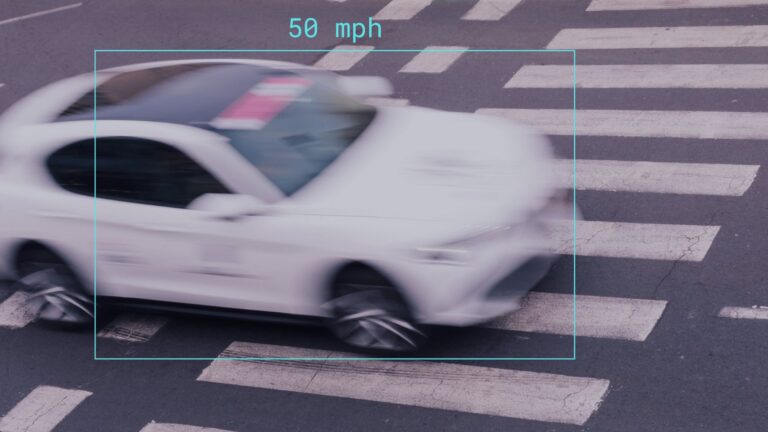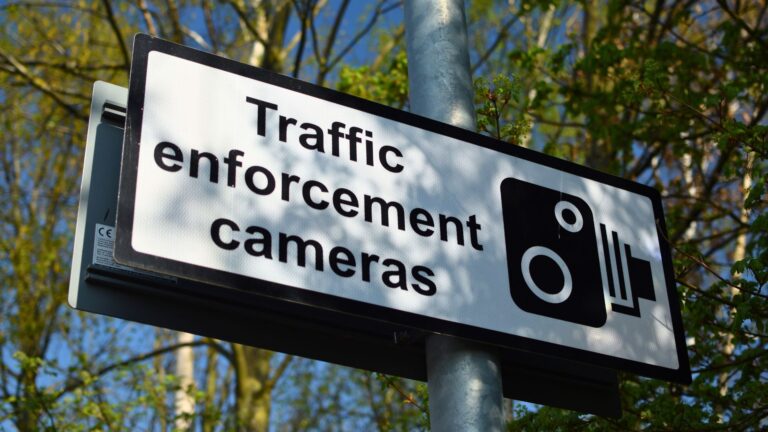
A crucial question when pursuing “vision zero” goals is: how do we protect the most vulnerable members of our society? Elderly people and children have a significantly higher risk of getting injured in traffic, particularly in school zones. City and county municipalities, and even statewide authorities, such as transportation departments, carry a large responsibility to make these areas safer and reduce crashes, injuries, and especially fatalities. Becoming a frontrunner and leading example in making school zones safer is not only the right thing to do, but it also sends an important political message to the residents of any community.
The numbers speak a gruesome reality: annually, 25,000 children on average are injured and more than 100 killed while walking to or from school because of speeding. According to the National Highway Traffic Safety Administration (NHSTA), the US counts 5 teen pedestrian deaths every week. Since 2013, the country has seen a 13 percent increase in pedestrian deaths among 12- to 19-year-olds. Distracted behaviour and the increased use of cell phones and headphones certainly play a role, however, it’s a fact that most municipalities are currently not doing enough to make their school zones safer and to reduce speeding in these areas. According to US statistics, only 4 out of 10 school zones have established speed limits of 20 miles/hrs., and 3 out of 10 school zones are still missing crosswalks. Even in zones with those precautions in place, driver behaviour remains a large contributor to these accidents.
Even a small decrease in speed makes a difference
Most vehicle operators are simply unaware that when it comes to speeding, even just going a few mph over the speed limit makes a huge difference in safety and crash prevention. When a car drives at a speed of 15 mph and hits a pedestrian, the risk of death is at 5 percent and 10 percent for severe injury. At 35 mph, there is a 30 percent risk of death and a 64 percent risk of severe injury.
Traffic incidents in school zones are not only tragic, and very often preventable, but they are also one of the most emotionally charged topics on any political agenda – whether within a municipality or statewide. North Pennsylvania, for example, recently announced a School Zones Traffic Safety Project including safety traffic measures and educational initiatives, supported by Scott Kubisiak, Enforcement Programs Manager at the Pennsylvania Department of Transportation (PennDOT), as well as US Senator Bob Casey, who announced the initiative: “Thanks to the Infrastructure Investment and Job Act, school zones around six North Philadelphia schools will be safer for students, faculty, and staff, and visitors alike. Students’ families will have greater peace of mind when they send their children to school each day”. The 25-million-dollar project is set to establish slow zones and speed enforcement around 6 schools. Based on PennDOT data, between 2017-2021 a total of 418 crashes had occurred in the project area, resulting in 156 injuries and 3 fatalities.
States across the U.S. are winning with ASE Systems
Officially launching in 2026, the project has received widespread media attention as one of the largest school zone safety initiatives to date. But Pennsylvania is already known for its focus on traffic safety, especially with the help of automated speed enforcement systems. In June 2020, ASEs were installed throughout the state, particularly on Roosevelt Boulevard in Philadelphia, with significant success. Between the start of the pilot in June 2020 and January 2022, the area saw a 93 percent reduction in speeding violations and a 50 percent reduction in traffic fatalities within the first 7 months of installation. Further, the city recorded a 36 percent decrease in total crashes and a 17 percent reduction in speeding-related crashes between 2019 and 2021.
Speed Safety Cameras have proven to be an effective tool for making school zones safer and protecting the lives of children throughout the US. In large jurisdictions such as New York City and Seattle, speeding in school zones was reduced by 63 percent and almost 50 percent, after installing speed cameras. Mesa in Arizona saw a 36 percent reduction in serious injury collisions between 2007 and 2013 after implementing a School Zone Speed Safety Program, according to an article published by Senator Susan Rubio of the California State Senate. Rubio has been known as a strong supporter of speed enforcement after she introduced Senate Bill 735 in 2021. The bill authorized local jurisdictions to utilize speed safety cameras to enforce speed limits in school zones while protecting the social equity and privacy rights of residents, fostering public acceptance and support through communication strategies.
In Maryland, automated traffice enforcement systems at 10 locations in Montgomery County have led to a 62 percent reduction in the probability of vehicles exceeding speed limits by more than 10 mph and a 19 percent decrease in crashes resulting in severe injuries or fatalities. In April 2023, Florida passed Bill HB 657, which allows for automated speed enforcement in school zones and made way for pilot projects. Georgia jumped on board in early 2024 and launched an initiative that is currently being implemented at various locations across the state, including work zones and school zones.
As many states recognize the importance and effectiveness of ASEs and adapt their laws accordingly, they are looking at advanced technology, reliability, and cost-effectiveness. For over 30 years, Elovate has successfully partnered with State Departments and governments across the US, primarily in Philadelphia, Maryland, Illinois, Delaware, and Connecticut, implementing and maintaining speed cameras and ATE technologies in the pursuit of making school zones a safer place for children everywhere in the United States.





